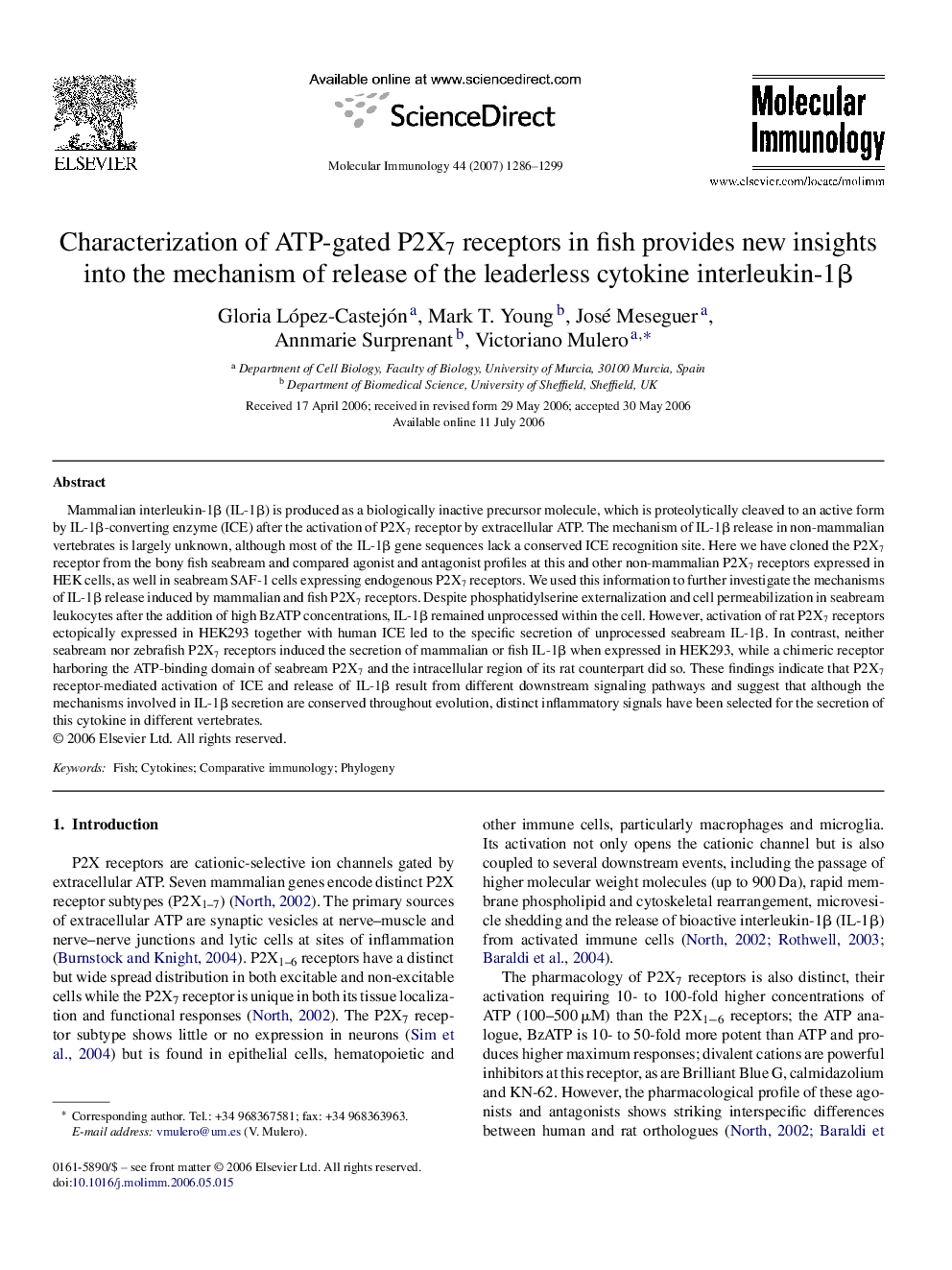| Article ID | Journal | Published Year | Pages | File Type |
|---|---|---|---|---|
| 2832482 | Molecular Immunology | 2007 | 14 Pages |
Mammalian interleukin-1β (IL-1β) is produced as a biologically inactive precursor molecule, which is proteolytically cleaved to an active form by IL-1β-converting enzyme (ICE) after the activation of P2X7 receptor by extracellular ATP. The mechanism of IL-1β release in non-mammalian vertebrates is largely unknown, although most of the IL-1β gene sequences lack a conserved ICE recognition site. Here we have cloned the P2X7 receptor from the bony fish seabream and compared agonist and antagonist profiles at this and other non-mammalian P2X7 receptors expressed in HEK cells, as well in seabream SAF-1 cells expressing endogenous P2X7 receptors. We used this information to further investigate the mechanisms of IL-1β release induced by mammalian and fish P2X7 receptors. Despite phosphatidylserine externalization and cell permeabilization in seabream leukocytes after the addition of high BzATP concentrations, IL-1β remained unprocessed within the cell. However, activation of rat P2X7 receptors ectopically expressed in HEK293 together with human ICE led to the specific secretion of unprocessed seabream IL-1β. In contrast, neither seabream nor zebrafish P2X7 receptors induced the secretion of mammalian or fish IL-1β when expressed in HEK293, while a chimeric receptor harboring the ATP-binding domain of seabream P2X7 and the intracellular region of its rat counterpart did so. These findings indicate that P2X7 receptor-mediated activation of ICE and release of IL-1β result from different downstream signaling pathways and suggest that although the mechanisms involved in IL-1β secretion are conserved throughout evolution, distinct inflammatory signals have been selected for the secretion of this cytokine in different vertebrates.
